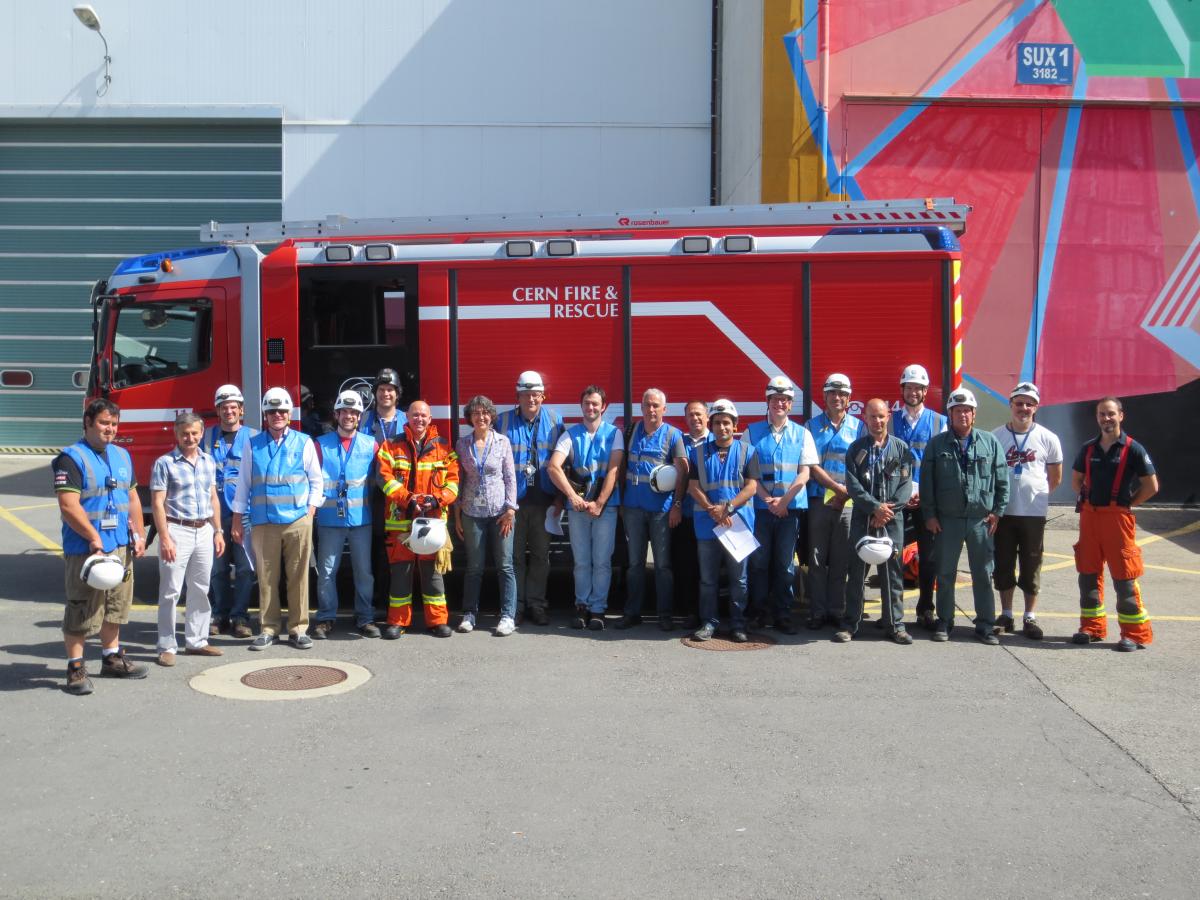ATLAS and LHCb evacuation exercises
The PH department, in partnership with the HSE, the fire brigade, and the Group Leaders In Matters Of Safety (GLIMOS), conducts annual exercises to ensure safety at CERN. This year, as part of the continuous effort to improve even more the safety standards of CERN, evacuation exercises took place for the first time in LHCb and ATLAS.
![]()
(Image Credit: Christoph Balle @CERN)
On June 3, LHCb organized a drill in its experimental cavern, which was monitored by twenty observers, with representatives from all four LHC experiments among them. Bernard Chadaj and Eric Thomas, the LHCb GLIMOS, worked closely to plan and ensure that everything would run smoothly during the exercise. The objective was to validate the evacuation "in the worst conditions" procedure, with the maximum number of people, i.e. 60, being in the underground area, including two groups of visitors, staff, and people working in and around the detectors at different workstations. It was an extremely well organized exercise: a lot preparatory work was done in order for the exercise to run smoothly and the organizers had to communicate with the various stakeholders to define the scenario and share the right information with the participants.
An evacuation alarm that was not associated with a particular danger was triggered to limit the risks. The exercise was a big success and in the future additional elements will be introduced to increase the difficulty of the evacuation and the intervention of the firefighters.
The organizers of the exercise would like to thank all the GS groups for their support before and during the exercise as well as the HSE Unit and all the obervers who actively participated. Finally, the emergency guides who were involved in this exercise and in the daily life of the experiment.
In the ATLAS experiment, the evacuation exercise took place on June 10 with the collaboration of the CERN Fire Brigade and the CERN security services. It was a simulation of an oxygen deficiency inside ATLAS that could be caused by a leak of cryogenic fluid, such as argon. For the purposes of the exercise, a few people were inside the toroid, while others were in the experimental cavern or in the service cavern. In the scenario, the participants inside the toroid needed an estimated five minutes to get out of the area and had to be very careful in their way out. In addition, emergency guides were appointed to assist the ATLAS personnel while evacuating.

Olga Beltramello, GLIMOS of ATLAS, was in the control room with Patrick Berlinghi, the Fire Brigade head of intervention, and the Shift Leaders In Matters Of Safety. They monitored the evacuation exercise from the cameras and with the FPIAA (Find Persons Inside ATLAS Areas) system based on hundreds of infrared shells that have been installed and can track any movement. They also provided directions to the Fire Brigade intervening team when necessary and guided them to the exact location of the people inside the toroid or other parts of the cavern. On the surface, the CERN security service provided assistance. This exercise was an opportunity for them to test their services and see how well they can handle the traffic of vehicles and people in the surface.


The evacuation exercise was independently assessed by 20 observers, including the GLIMOS from all the LHC experiments and Mark Hatch, the DSO of the PH Department, who made comments and suggested improvements. Overall, the exercise was very successful. It has demonstrated the close collaboration and the good coordination between the ATLAS Safety team and CERN security services. .
The exercises in LHCb and ATLAS a lot of cooperation between the safety teams of the large experiments, the fire sevice and the PH Safey Officers. They confirmed that the safety standards of CERN remain high and that the different services involved with safety collaborate actively.
